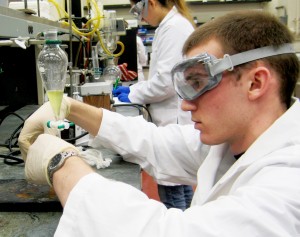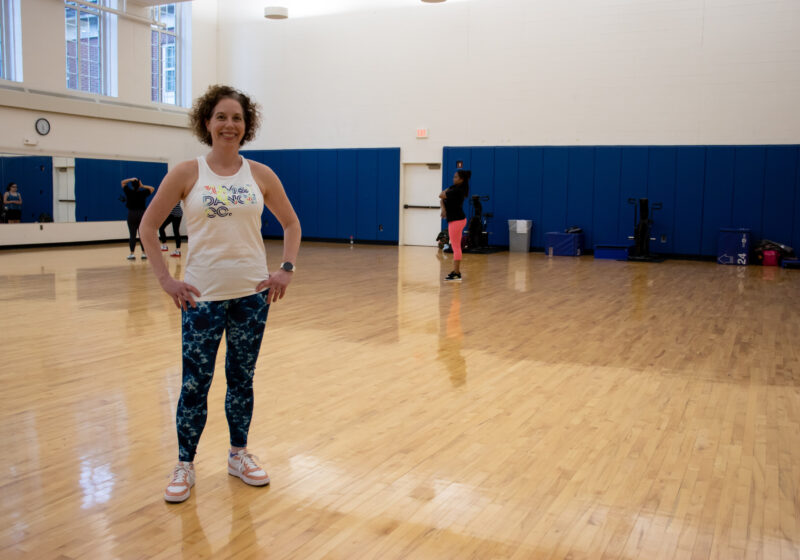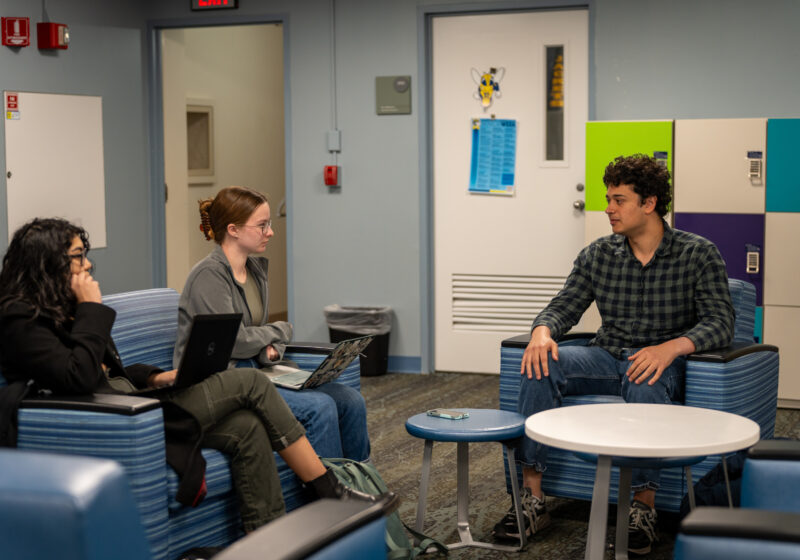
Sophomore Andrew Smith at work in Hutchinson Hall, where a small fire broke out on Wednesday, Feb. 2. Courtesy of Bowyoung Kim.
Last week, campus laboratory facilities were not only abuzz with the customary stirrings of students at work, but literally ablaze as well. At 5 p.m. on Wednesday, Feb. 2, a fire broke out on the fourth floor of Hutchinson Hall, the product of an experimental blunder.
An undergraduate in the midst of an independent study research project was directly involved. His name has not been released.
According to UR Chemistry Department Chairman Robert K. Boeckman, the student had been working with a process called column chromatography, whereby organic chemists separate pure compounds, when the solvent that he was using ignited. The most valid speculation regarding causal factors is that one of the metal catalysts within the chemical reaction taking place had dried out and caused a spark, thus igniting the solvent.
“We will never know for sure,” Boeckman said.
The fire was entirely unexpected, as relevant experimental proceedings had been underway for months without incident.
“In my experience of running column chromatography in over 25 years in this building, this has never happened,” Boeckman said.
The students had altered their experimental procedure “slightly,” unaware that such alterations might carry consequences of the flammable sort. Whether or not those alterations (having to do with the quenching procedure, in which a reactive species is rendered nonreactive) actually caused the fire is uncertain.
The student reacted appropriately, exiting the laboratory quickly and pulling the fire alarm.
According to the Chemistry Department Safety Officer Kenneth Simolo, safety training is required for all incoming students. The Rochester fire department oversaw cleanup efforts and ensured that there was no potential for re-ignition.
The student suffered some minor burns, and the entire building was evacuated as per emergency protocol.
“Ultimately, chemistry has certain inherent hazards to it, and we try to minimize the impact of those hazards, making sure that people follow the proper procedures,” Boeckman said. “It is our experience that it’s always the things that are viewed as the least dangerous that cause the most problems. If you had talked to people five minutes before this accident, they would have said that what they were doing was probably the least dangerous thing that they were doing that day.”
The event was a sort of wake up call for those familiar with scientific research and laboratory activities within the building.
There is a rule — often broken -— that permits no one to work in a laboratory alone. Though the student was working with a graduate student on the project, no one else was physically in the room at the time of the accident.
No disciplinary action will be taken with regard to the accident. Boeckman and UR Security agree that this incident was one that the student could not possibly have foreseen.
“He didn’t do anything overtly wrong, other than [that] he neglected to put on his lab coat,” Boeckman said.
This was the cause of the minor injuries he sustained.
The fire itself was contained roughly within a three-foot area, and it was put out in about of 30 seconds. Boeckman shared that, in general, students and faculty do the utmost to ensure safety in the laboratory and that, when something goes wrong, problems are addressed with great care.
Due to HIPAA, the condition of the victim could not be disclosed.
Gelbard is a member of
the class of 2013.

